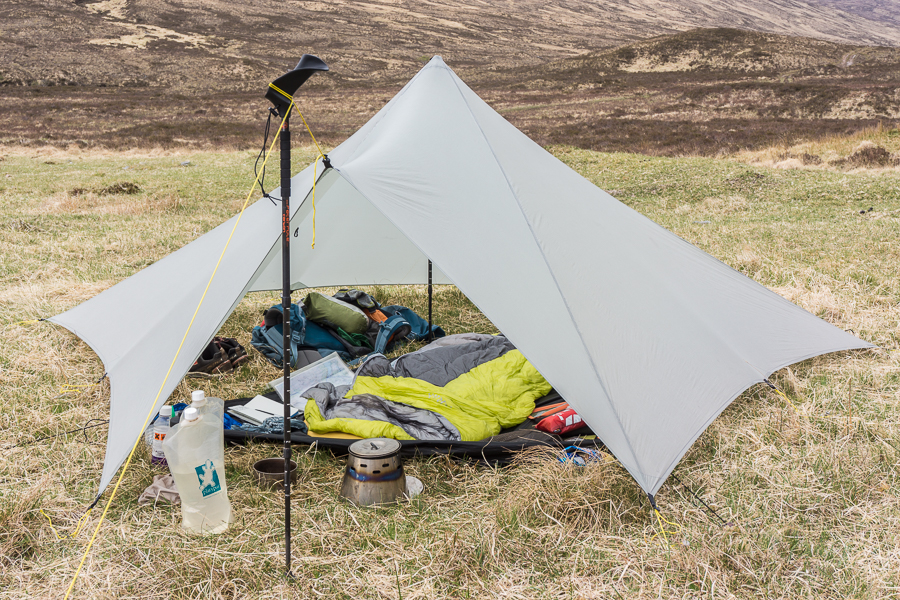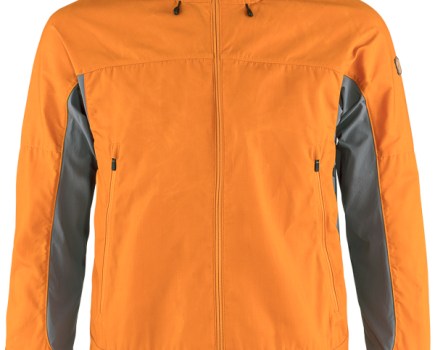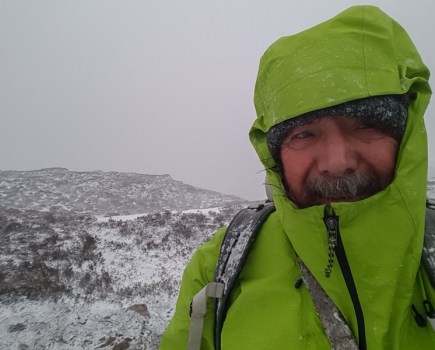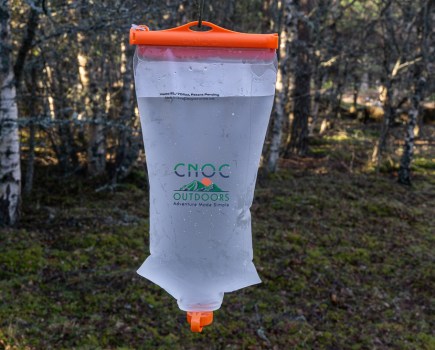Chris details the camping set up from his coast-to-coast crossing of Scotland on the TGO Challenge earlier this year
The shelter, sleeping bag, sleeping mat and cooking gear that I used on the TGO Challenge this year weren’t new. Indeed they were well-worn, all having been used on my Scottish Watershed walk three years ago and on many other trips. All the items are very light but still in good condition after many months of use.
My shelter was the Mountain Laurel Designs Trailstar (1kg with pegs and groundsheet). Whilst I was impressed with the design, especially the wind resistance and the space inside, I did wonder how long it would last when it was new as the material is very thin. I now know that it’s very durable. My crude seam sealing has lasted too. I did this when the tent was new, four years ago, simply by smearing the sealant down the seams direct from the tube. I’ve never renewed it and there’s never been any leakage.
The sleeping bag was the 650g Rab Infinity 300, which kept me warm in temperatures down to +1°C, the coldest night of the walk. The bag is rated to +2°C and has been cleaned once – it needed it after two months on the Watershed! My mat was the 230g Therm-A-Rest NeoAir XLite Short, which is comfortable, very light and packs away to a tiny bundle.
For cooking I used the 220g Trail Designs Ti-Tri cone with the 12-10 meths burner. This is a veteran of the Pacific Northwest Trail as well as the Scottish Watershed. Two nights before the end of the walk the glue holding the burner together did fail but I could still use it by simply putting the pieces together. Given it’s made from drinks cans I think it’s proved surprisingly tough. My pot was yet again the Evernew 900 ml titanium one – this is now 25 years old.








